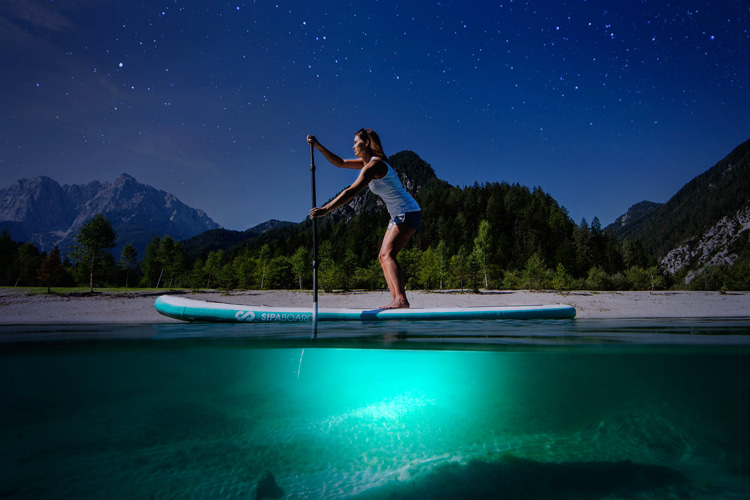The electric revolution is taking over water sports. Here's why an electric-powered stand-up paddleboard (SUP) is more exciting and useful than you'd think.
The rise of electric-assisted sports equipment started with bikes before moving to surfboards, skateboards, and other activities.
Initially, we wondered why we would need motor power in something that was supposed to be physically demanding.
But soon, after testing them out, we realized that it's all about getting a complement, i.e., an extra feature we may want to use.
E-surfboards and e-skateboards allow for longer rides, bring more autonomy to users, and will never aim to replace the original feeling.
Actually, electric power can stimulate exercise and gamify the sports experience, making us want to experience life outdoors more often.
And with SUP boards, it makes all sense.
The sport of paddleboarding has several disciplines, from surfing and distance racing to yoga and cruising.
So, why should we add an electric jet motor to a SUP?
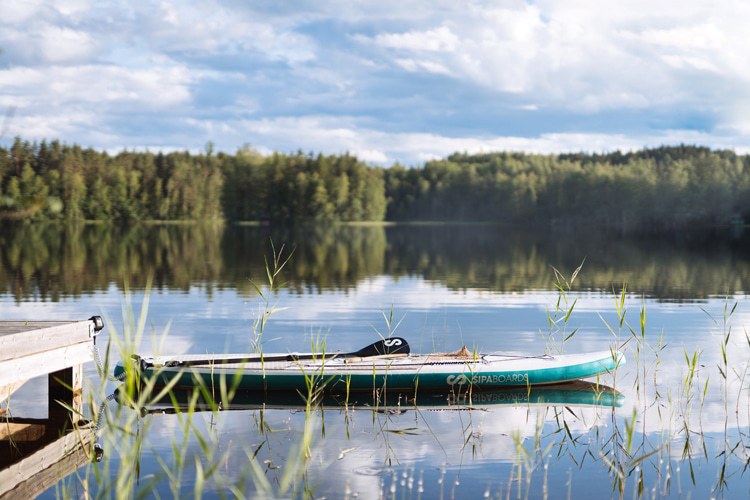
The Electric and Inflatable SUP by SipaBoards
Sebastjan Sitar founded SipaBoards in Slovenia.
He started the world's first e-driven, self-inflatable SUP company after his wife and daughter nearly got carried away by strong currents while paddling.
Sitar felt that paddleboarding novices are often unaware of critical and life-threatening variables of water sports, such as changing winds, strong currents, tides, and traffic.
As a result, they can find themselves in dangerous situations they cannot handle, and the entrepreneur decided to explore this commercial opportunity.
The Sipa All-Rounder Drive is one of the brand's e-SUP models.
It's an 11-foot long, 35.4-inch wide, and six-inch thick self-inflatable paddleboard featuring a fully integrated jet engine and a built-in compressor.
When inflated, it offers 310 liters of stability and balance.
The carbon fiber paddle comes with a wireless Bluetooth remote that controls three speed options - slow, medium, and fast.
Without the engine, the board weighs 8.25 kilograms; with the engine installed, the weight goes up to 14.25 kilograms.
The 144Wh battery allows between 1-4 hours of riding and pushes the board to speeds up to 5 km/h.
The built-in compressor inflates the e-SUP in six minutes, and the whole kit fits in a backpack so that you can carry it to the coastline.
In the end, there are not many items involved, which is always a good and practical thing.
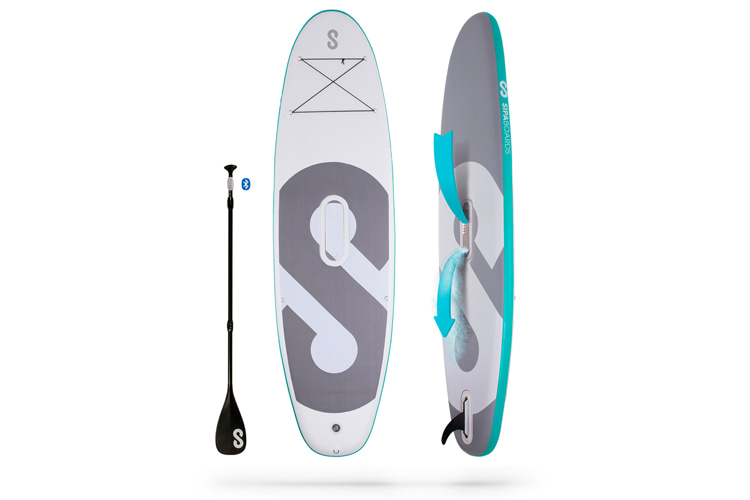
Setting it Up
When you think about setting up electric-powered equipment, you may tend to expect a time-consuming and complicated setup.
Fortunately, it is not.
Despite the number of items included in the Sipa All-Rounder Drive, the truth is that it was surprisingly easy - and fast - to get the board ready to ride.
After watching the brand's tutorial video, you'll know everything about assembling the electric paddleboard.
The developers made the whole process simple for the user. In the end, all you really need to do is attach the leash and install the fin (optional).
The inflating process is automatic, and we could even say it is rather entertaining to witness it gain form.
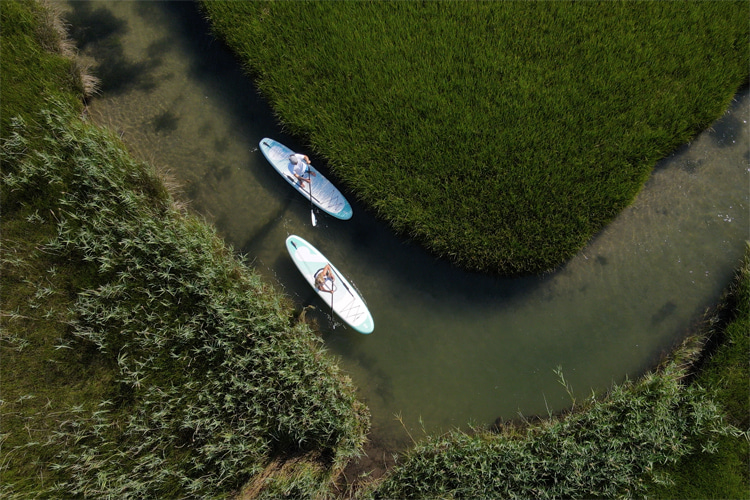
The Paddling and Riding Experience
We tried out the Sipa All-Rounder Drive in slightly challenging conditions.
The idea was to put the e-SUP to test in a non-flat ocean to see if the choppy and bumpy waters would affect the jet's performance.
When we got to the water, the first impression was the overall sturdiness and stability of the electric paddleboard.
We had no problem getting it past the shore break waves, and the fact that the paddle floats also helps you relax and get back out effortlessly.
SipaBoard's state-of-the-art jet-powered SUP met the expectations and provided enough room and balance for not one but two riders.
The difference between a hard SUP and this inflatable paddleboard is nearly nonexistent. The deck feels as tough and rigid as its counterpart.
With the remote control attached to the paddle, all we had to do was turn it on, select speed, accelerate, and turn it off whenever we wanted.
With a groundswell hitting the coastline, we wanted to know if the SUP's jet power could help get over near-breaking waves.
And yes, it was. In fact, it was probably the most playful use.
At full throttle, we were able to climb the wave face faster and get to the other side safely and dry.
The Sipa All-Rounder Drive is not meant to surf, even though you can catch a few two-foot waves on it.
It's a cruise-style stand-up paddleboard that allows you to exercise your body and explore the coastline further away from the beach.
It could even be used to commute between small islands or coastal locations.
Interestingly, combining arm power and motor power was inevitable.
It's not fun to just press play and let it drive you at full speed across the water. You also want to use the paddle and do your old-school-style workout.
At least, that's what we felt. We wanted to exercise ourselves and simultaneously have fun.
And that's the secret of an e-SUP owner - to be smart and make intelligent use of both manual and power modes.
In flat waters - sea, lake, or river, Sipa All-Rounder Drive behaves like an ocean liner. It's super stable and provides an extraordinarily smooth ride.
You can even picture yourself reading a book or enjoying a glass of wine on top of this solid platform.
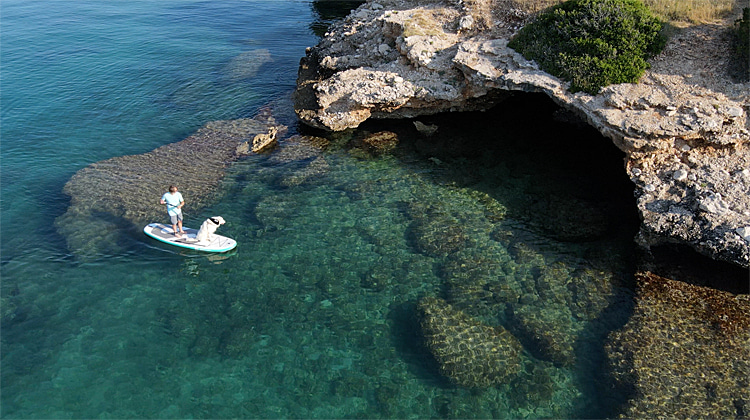
Deflating and Packing Up
We have to admit. We were skeptical about the post-session experience.
After a two-hour test drive and an in-depth analysis of its performance details, we were tired, and getting things back in the car was not the most pleasant image.
The fun drained our energy, and we knew we still had to deflate and pack the board into the backpack.
The good news is that it was really quick to deflate the monocoque structural laminate (MSL) fusion construction, disassemble the items (motor unit and fin), grab the backpack, and drive home.
The good news is that the deflation valve and a simple folding of the board's skin are all you need.
It took us less than ten minutes to rinse the equipment with fresh water and get ready to go, making it a fun addition to any surfer's quiver.
Yes, we would have loved to get 33 percent off the weight of the overall kit, but we also know that stiffness, strength, and balance come at a price.
Last but not least, there's an app that allows users to monitor the battery and the motor, control the speed and the built-in LED lights system, monitor the pumping process, and track the ride.
Hopefully, SipaBoards will continue to focus on quality and aim to be the world's best electric-powered stand-up paddleboarding company.
And who knows, the Slovenian brand could apply their technology to a potentially successful e-foil.
